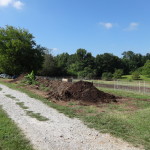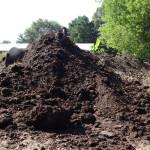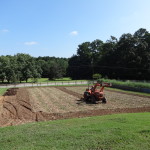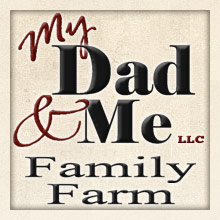If you’ve ever tried to till up a plot of Georgia Red Clay that hasn’t been amended in any way, your thoughts will immediately try to figure out how to heal such dirt – something that hard when dry and that sticky when wet must need healing! Nothing amends the soil like compost. I won’t try to cover composting in a technical sense here, but even though I’m not a qualified expert, the good news is: you don’t really have to be.
Really, there are two compost piles. Or two ways to approach composting. The best way is if you can keep some animals. Even in your neighborhood a couple of rabbits in the garage can greatly help a compost pile with their rich droppings. With our Jersey cows, we are never short manure and urine. The cows spend at least three hours a day (milking morning and night) in the barn where we manage their manure and urine with wood chips or wood shavings. This mixture alone, once composted is fantastic on the garden!
The other compost pile is without animal manures. This takes a bit more work because you need to work hard to get enough ‘greens’. Grass clipping are probably the best bet. When we lived on a half-acre lot growing up, my brother and I cut about a dozen yards around the neighborhood and we would bring the clippings home – we had deep, black, rich garden soil because of those clippings!
Here’s a shot of some compost we put on the garden last fall:
To build a compost pile, mix your greens (animal manures, grass clippings) with your browns (straw, wood chips/shavings, leaves) and turn the pile as often as you can. Small bins turned by hand or huge piles turned with a tractor all benefit from the aeration that moving and stirring creates. When you can’t differentiate between the greens and browns (it’s all black!) and you can’t smell strong, pungent manure, you’re ready for the garden or raised beds.
Whether you’re keeping a couple of raised beds without animal manures, or you’re gardening to sell veggies and using cow manure, compost is one of the foundations of healing the land!





Your comment on wood shavings, does that include wood sawdust like I get from my planer?
Sure! Sawdust is great because it’s already broken into such small pieces. Avoid pressure treated lumber, and be sure to have plenty of ‘greens’ to provide the nitrogen to help break down the wood fibers.